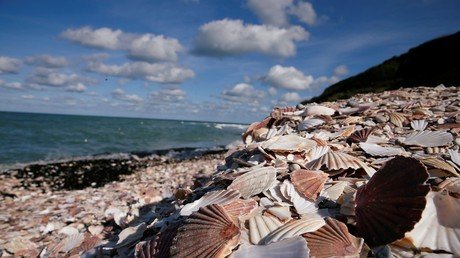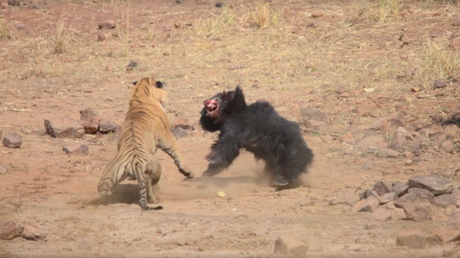Animal species facing ‘mass extinction’ in Haiti as habitats stripped bare by deforestation
Haiti is facing a deforestation crisis, with a new study finding that it has less than one percent of its original primary forest – and even that is under threat. Forest-dwelling species are becoming extinct as a result.
The study, conducted by scientists affiliated with Oregon State University and published in the journal PNAS on Monday, found that 42 of Haiti’s 50 largest mountains have lost all of their primary forest. The term ‘primary forest’ refers to forests that are original and untouched, rather than ‘disturbed forests’, which have been selectively logged or regrown.
What’s worse is that if these conditions continue, Haiti will lose all of its primary forest over the next two decades.
And it’s not just trees that are disappearing – species of reptiles, amphibians, and other vertebrates are also becoming extinct as their habitat diminishes.
“This indicates that Haiti is already undergoing a mass extinction of its biodiversity because of deforestation,” the study states.
The effects are preventable, however, as the study attributes them to human behavior. And even though the trend has been happening for a while – with Haiti’s primary forest cover declining from 4.4 percent of total land area in 1988 to 0.32 percent in 2016 – humans seemingly haven’t done much to make the situation any better.
Study co-author Warren Cohen pointed to the need for a differentiation when it comes to reporting on deforestation, as many reports fail to make a distinction between primary forest and disturbed forest. “Expanded detection and monitoring of primary forest globally will improve the efficiency of conservation measures inside and outside of protected areas,” he said in a press release.
READ MORE: T-rex redesign: The Jurassic meat-eater as you’ve never seen him before (PHOTOS)
The greatest levels of deforestation occurred in Haiti following European colonization, resulting in the complete loss of primary forest on one of Haiti’s largest 50 mountains by 1986. The facts revealed by the study are seen as extremely worrying, as tropical forests hold most of the Earth’s biodiversity, and deforestation is the main threat to species worldwide.
Haiti, located on the island of Hispaniola, is one of the poorest countries in the developing world. It is densely population, with nearly 11 million people living on a land area of less than 11,000 square miles (27,750 square kilometers).
Like this story? Share it with a friend!















